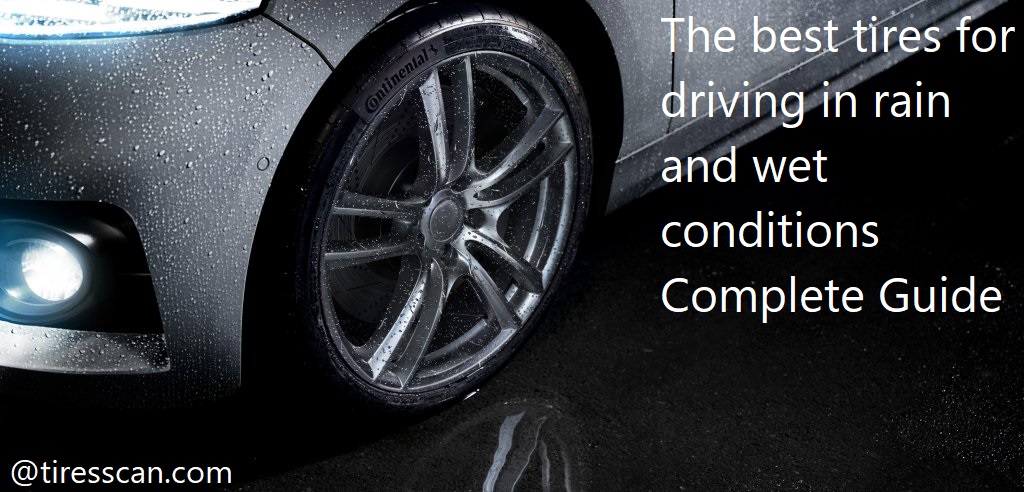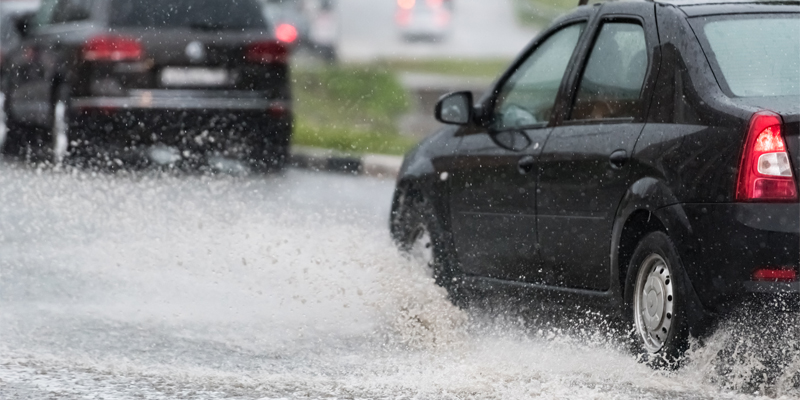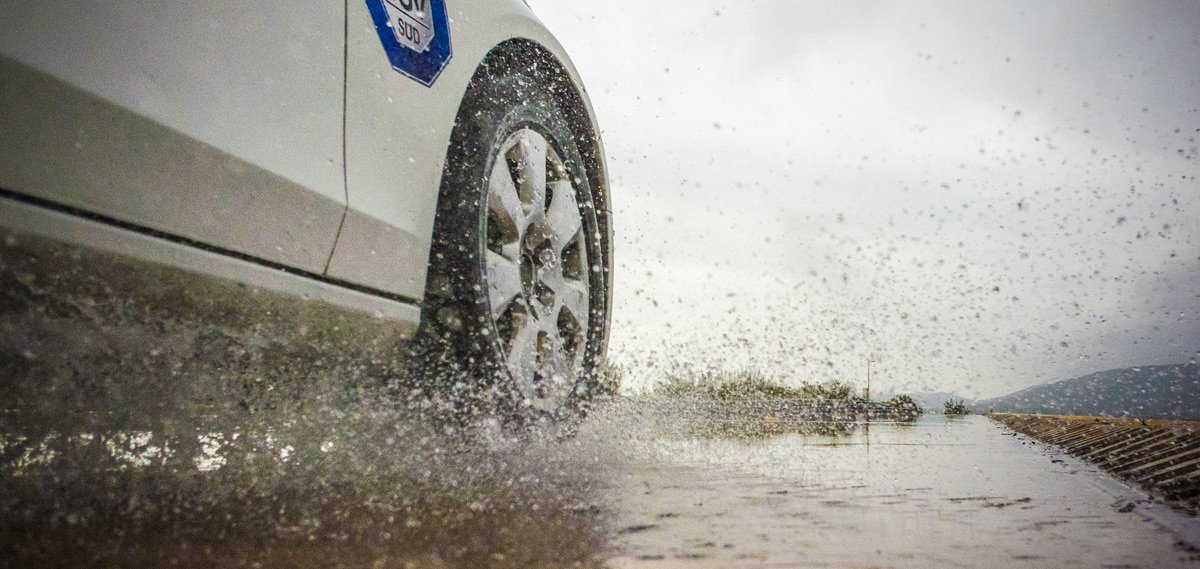Worried about navigating wet roads? You’re not alone. But, don’t let the weather prevent you from enjoying your drive. With the perfect set of tires, you can be prepared for whatever Mother Nature throws your way.
This comprehensive guide will help you pick the best tires for driving in rain and wet conditions!
The type of tires you choose will play a huge role in your driving safety and performance in wet and rainy conditions. When you’re on the road, it goes without saying that safety should be your top priority.
Different types of tires have different capabilities for wet and rainy conditions, so it’s important to do your research before making a final decision.
This guide provides important information about the types of tires available for rain and wet conditions, as well as the advantages and disadvantages of each option. With this information, you’ll be better equipped to select a tire that meets your needs while ensuring optimal driving performance in challenging weather conditions.
Importance of choosing the right tires for wet conditions
Having the right tires for wet and rainy conditions is essential to ensure a safe and comfortable driving experience. It is crucial to select tires that provide maximum traction with minimum stopping distance in the wet, along with improved cornering and handling in difficult weather conditions. Tires designed for wet conditions offer an optimal balance between grip and braking performance to maintain excellent control even on slippery pavement, reducing the risk of skidding or hydroplaning.
The right set of tires have significant impacts on vehicle stability and hydroplaning protection, allowing you to confidently tackle rain-soaked roads while drastically improving road safety as well. In addition, certain rubber compounds used in rain-specific tires helps increase water dispersion capabilities, providing higher levels of traction even when driving becomes dangerous or unmanageable due to heavy downpour.
Selecting the right set of wet weather tires not only enhances your overall driving experience but also reduces wear and tear on your vehicle by maintaining better contact with the road at high speeds during rainy days. It is incredibly important to consider the following factors before investing in a set of new rain-specific tires for your car: tire size, tread pattern, noise level, speed rating, temperature grading etc. This guide will provide all you need to know about choosing the best possible tire suited for rainy and wet terrain on roads.

Factors to Consider when Choosing Tires for Wet Conditions
Before making a purchase, it is important to consider the type of tire that is best suited for driving in rain and wet conditions. There are several factors to consider when selecting the optimal tire for your vehicle and driving habits.
Tread Type: Choose a tire with an aggressive tread pattern. Tread blocks should be deep enough to displace water from underneath and provide traction in wet conditions. Look for a tire with deep, V-shaped grooves designed to funnel water away from the contact patch for improved grip on slick surfaces.
Tread Compound: Select tires with rubber compounds specifically designed for better grip in wet conditions. These compounds provide additional flexibility to keep consistent contact with the road surface and maintain maximum traction in rainy or wet weather.
Construction: Look for tires featuring an all-season radial construction, which helps maximize performance in all types of weather environments by reducing heat buildup and maintaining proper inflation pressure. This helps increase both handling and braking performance in rain and across various weather conditions over time.
Traction
When choosing the best tires for driving in rain and wet conditions, there are several key characteristics to consider. Traction is the most important factor and heavily influences the safety and performance of your vehicle in conditions such as rain and snow. The right set of tires can give you the confidence to safely maneuver your vehicle during wet weather.
Traction refers to how well a tire can grip a wet or slippery surface. Many tire manufacturers use silica-based compounds, which increase traction on wet roads by increasing flexibility and grip, especially when cornering. Tires with wide tread blocks provide more area for the silica-based compound to “bite” into the road surface, further improving traction. Additionally, deep grooves channel or “evacuate” water away from contact with the tire, helping to prevent hydroplaning on slick surfaces. Utilizing a combination of deep grooves and wide tread blocks will provide maximum traction in extreme weather conditions such as heavy rain or snow.
Tread Pattern
The tread pattern of a tire is designed to provide the best grip in relation to the terrain. For driving in wet conditions, a good tire should have large and deep grooves fitted closely together, which will channel away water from the contact patch between you and the road. On dry roads, tires with wide grooves can displace too much water and cause you to lose traction.
Tires that are designed specifically for wet conditions can often increase grip even further by using aquaplaning control tread blocks in-between the grooves — these strategically placed blocks reduce the amount of water that escapes between them by creating a web-like pattern of channels.
When considering all-season tires, be sure to look for one which has dimples evenly distributed around its circumference and across its face, which help disperse water away from the surface for improved grip. Be wary of tires with too many or too few tread blocks as this will reduce their performance on wet roads, especially those with very shallow and wide grooves that don’t effectively displace pooled water from your path.
Rubber Compound
Rubber compound is the material from which most tires are made. It has a major influence on safety, performance and the longevity of your tires. You should always choose a rubber compound that suits your needs and the weather conditions you will be driving in.
Mostly, tires are made with a blend of hard and soft rubber compounds. The hard rubbers are more apt to last longer under frequent use, but do not provide grip when conditions are slippery. In circumstances where road surfaces become wet or icy, a softer rubber compound can provide better gripping ability as it’s flexible enough to experience greater contact between the tire’s tread and the pavement.
When shopping for tires, you’ll see two measurements that indicate what type of rubber compounds were used when creating them: treadwear rating and traction rating. The treadwear rating indicates how durable the tire is while traction ratings tell you how well it grips wet surfaces. When selecting tires with both ratings at high levels, you can rest assured that they will last longer while still offering superior traction over slippery roads.
Hydroplaning Resistance
Hydroplaning occurs when the tire’s tread is so worn that it is not able to disperse the water from under the tire. This can then cause a sudden loss of contact between your car and the road, which can result in a tirespin.
To reduce the risk of hydroplaning, you should look for tires with higher tread depths as they are more effective in dispersing water away from the tire’s contact patch. Also consider buying deeper grooved tires as they have more edges to better clear away water. Additionally, make sure to always keep your tires properly inflated according to the manufacturer’s recommendation. This will help maintain an even distribution of pressure on each part of your tire and ensure optimal performance, even while driving in wet conditions.
Tread Design
The main feature to look for when buying tires for wet road conditions is a tread design that quickly evacuates water from the contact patch. There are several forms of tread design that can help accomplish this, and each work in different ways.
First, large grooves in the tread can trap and move water away from the wheel by channeling it through gaps or bars in the rubber. This helps to reduce hydroplaning and aquaplaning – two common occurrences on wet roads that can cause instability and dangerous skidding. Furthermore, wide circumferential grooves are especially effective at helping to keep your vehicle on track even during heavy rains.
Second, different tire patterns such as lateral grooves, cross-grooves, 3D sipes, or zigzag slits can increase traction by providing a better grip on slippery surfaces due to their enhanced surface area coverage. Each pattern serves to ensure more points of contact with the ground while also evenly distributing pressure within them when they come into contact with road surfaces – thus optimising safety when driving in wet conditions.

Tread Depth
Deep tread blocks are physically thicker rubber which gives your car better grip on wet roads. Deeper tread blocks displace a greater amount of water and helps to expel it quickly from the contact patch when driving.
As a general rule, the deeper your tread, the better you will perform on wet roads. The ideal tread depth will vary depending on the type of tire, but in general, if you find that your tire has limited tread depth, there is a good chance they could be dangerous when driving in wet conditions.
As with any safety feature of your car, it is important to replace worn tires at the earliest sign of wear to ensure maximum performance and safety.
Wet Braking Performance
Wet braking performance is critical when driving in wet and rainy conditions due to slippery roads from rain and standing water. In order to help maintain stability while driving, it is important to ensure that the tires are providing adequate traction. Wet braking performance can be measured by evaluating how long it takes for a tire to stop on a wet surface. Different tire types have different abilities when it comes to wet braking performance.
Tires with tread patterns that direct water away from the road, known as hydroplaning, can give better wet braking performance than tires that do not have these tread patterns. All-weather tires typically provide good wet traction and handling, however they lack the all season grip and stability of summer tires or winter tires due to conflicting compromises between designs. Therefore, special care must be taken while driving in wet conditions with all-weather tires.
Take the extra precaution of checking your tires before setting off on a journey during rainy days and make sure your current set of tyres provide both safety, durability and reliability in harsh environments until you arrive safely at your destination.
Tread Design
Tread design is an important factor to consider when looking for the best tires to drive in wet and slippery conditions. The tread of a tire is designed with grooves and sipes, also known as “tread elements”, located on its surface to help displace water away from underneath the tire and increase traction. The deeper and wider the grooves are, the more effective they are at evacuating water. Additionally, sipes are small slits that break up surface tension which helps provide grip on wet roads.
Therefore, it is important to look for tires with a deep tread depth and wide grooves; these will be more effective at maintaining grip in heavy rain or standing water situations. The tread should necessarily achieve the minimum legal depth –– typically 1.6 mm for most countries –– so that hydroplaning does not occur due to excessive shallow grooving or balding of tires on harder road surfaces, leading to an increased risk of unsafe driving scenarios.
Rubber Compound
The rubber compound used in making tires is among the most important aspects of a tire’s performance in wet conditions. There are two different types of compounds – silica and carbon black. Each compound has their own advantages and provided different levels of grip when driving in wet conditions.
Silica-based tires have a higher concentration of silica in the rubber compound, which helps create a more consistent grip on wet surfaces. These tires also provide superior short-term stopping distances compared to other types of tires and offers improved stability during hard turns on slippery roads.
Carbon black rubber tires offer better tread life as they are softer than standard rubber compounds. They provide good grip on wet surfaces, although not as good as silica tires, but they do offer more reliable long-term handling performance even after extended use. In general, carbon black rubber is an excellent option for those who drive regularly on wet roads or uneven terrain.

Conclusion
It’s important to consider both the type of tire and the tread design when choosing tires for wet roads and rain-covered streets. Tire type affects a vehicle’s heat buildup, traction in the wet, and overall performance. Tread design should complement the tire type you choose, and should be optimized for improved traction in wet conditions.
When driving in rain or on other wet roads, it is best to purchase tires with a good tread depth. Generally, this means opting for tires with tread depths of 8/32″ or more. Tires with shallow tread depths have less ability to expel water away from their path and may decrease your vehicle’s grip on the road surface. In addition, a deeper tread depth allows your tire to maintain its contact patch longer despite lateral forces like cornering.
It is also important to ensure that you are rotating your tires at regular intervals based on their manufacturer recommendation and examining your tire deflation levels after long drives at higher speeds. Following proper tire maintenance strategies can help keep your tires running longer and performing better over time – even in rainy weather!
FAQs
What tires perform best in rain?
Tires with good wet traction and grooves that help channel water away from the tire’s contact patch perform best in rain.
What type of tires can help prevent hydroplaning?
Tires with deep treads and grooves that help channel water away from the tire’s contact patch can help prevent hydroplaning.
What are the best tires for rain soft or hard?
Softer rubber compounds tend to provide better traction in the rain, but the best tire for rain will depend on a variety of factors, including the vehicle, the driving conditions, and personal preference.
What is the best tread pattern for wet roads?
Tread patterns with deep grooves and channels that help disperse water away from the tire’s contact patch are ideal for wet roads.
What makes a good wet weather tire?
A good wet weather tire has a tread pattern designed to provide maximum traction in wet conditions and is made from a rubber compound that stays flexible even in cold and wet conditions.
Which tire is more likely to hydroplane?
Worn or bald tires are more likely to hydroplane because they lack the depth and tread pattern necessary to channel water away from the tire’s contact patch.
How do you avoid hydroplaning when driving in heavy rain?
To avoid hydroplaning, drivers should slow down, avoid sudden movements, maintain a safe following distance, and make sure their tires are properly inflated and have adequate tread depth.
Why are my tires not gripping in the rain?
Tires that are worn or have inadequate tread depth may not grip well in the rain. Also, if the tire pressure is too low or the vehicle’s alignment is off, it can impact the tire’s grip.
How can I improve my tire traction in the rain?
To improve tire traction in the rain, ensure the tires have adequate tread depth and are properly inflated. Additionally, consider purchasing tires designed for wet weather performance.
What type of tire is most effective in all types of weather conditions?
All-season tires are designed to provide good performance in a variety of weather conditions, including rain, light snow, and dry conditions.
See Also:
- Best Tires for a Suburban
- Best Tires For Nissan Murano
- Best Low Rolling Resistance Tires
- Best Tires For A Prius
- Best Tires for Jeep Wrangler

